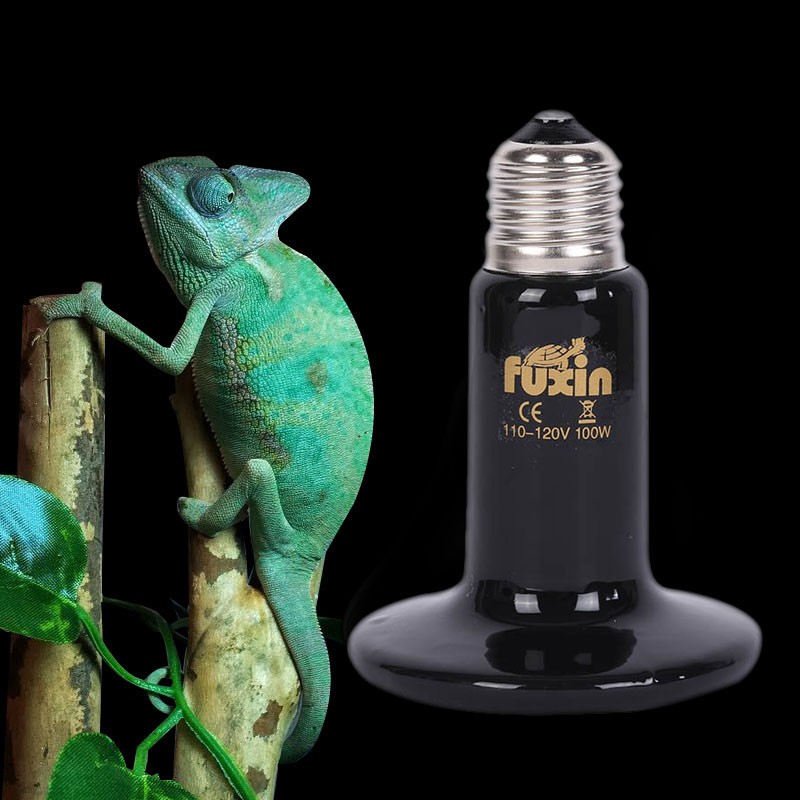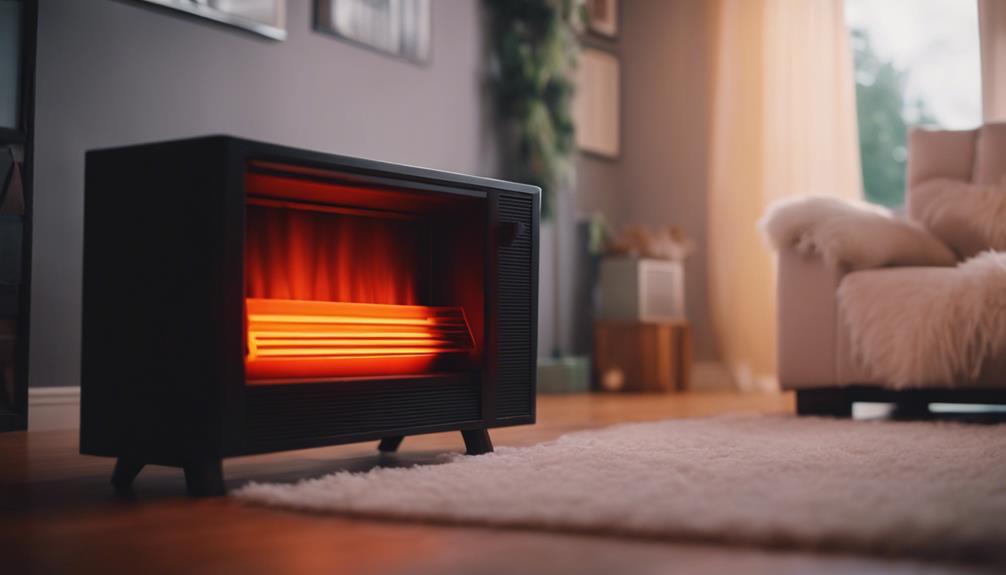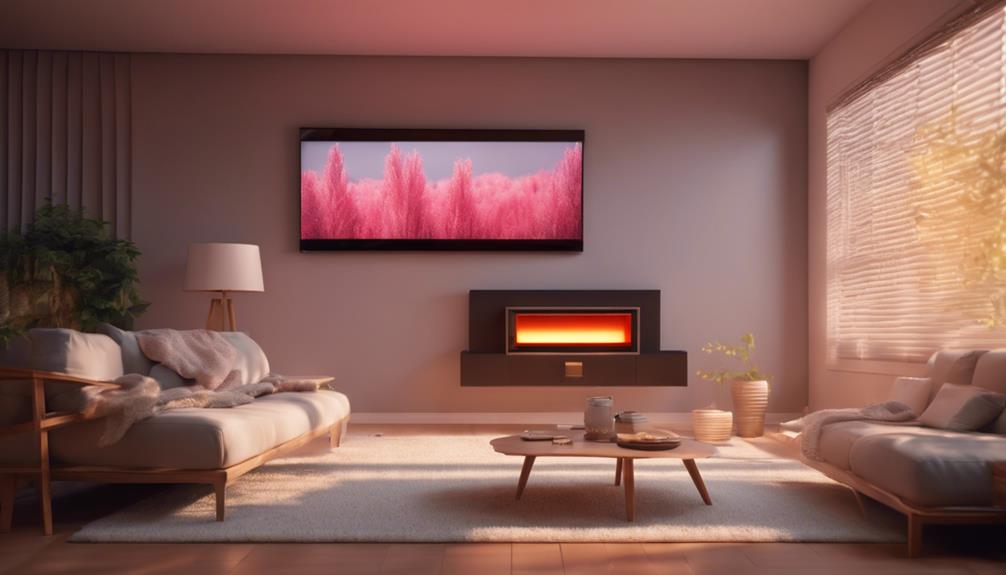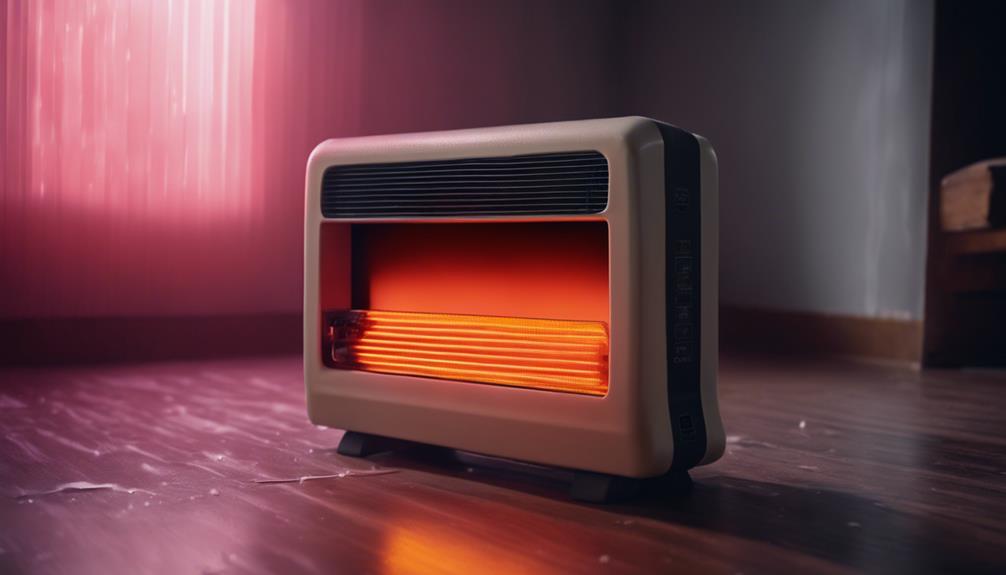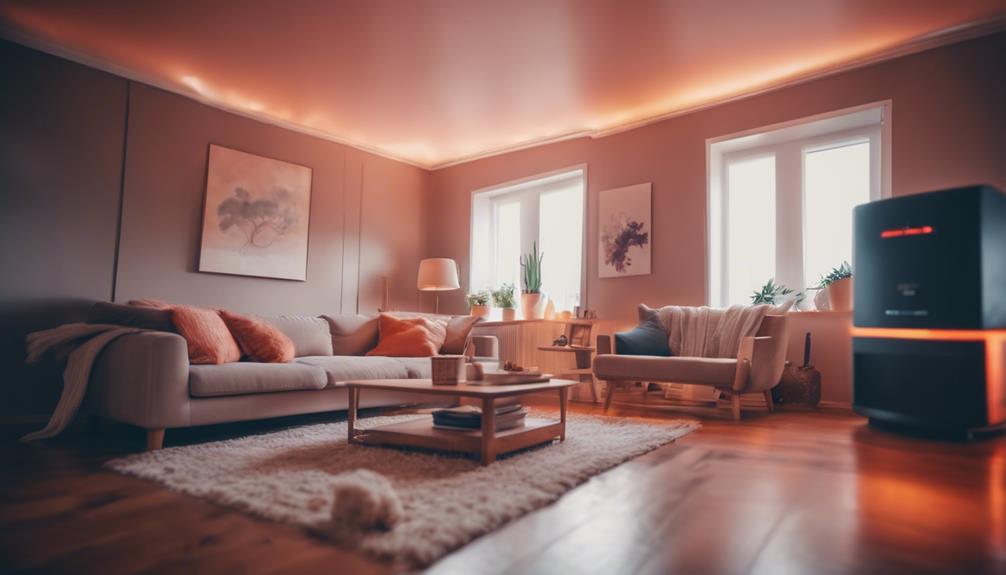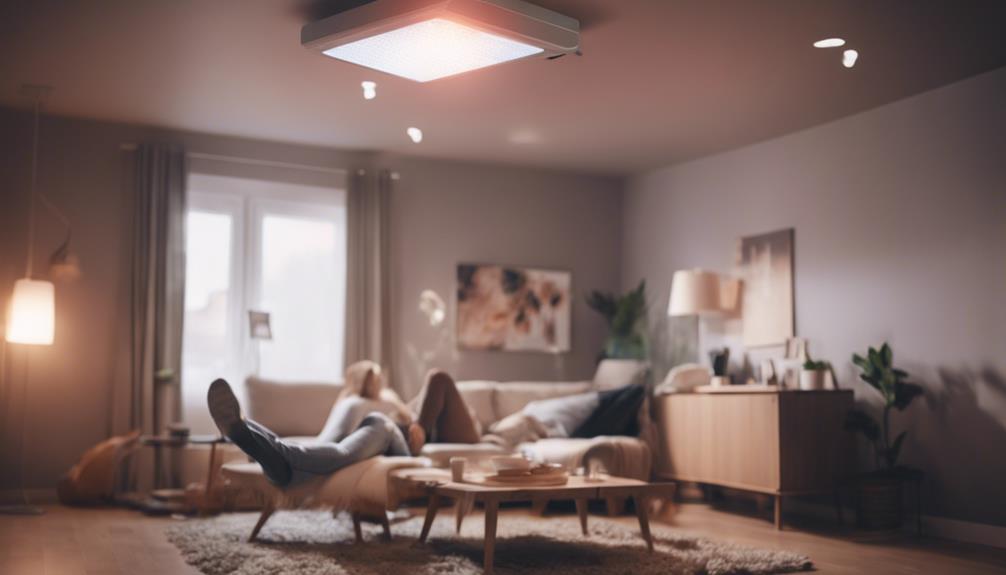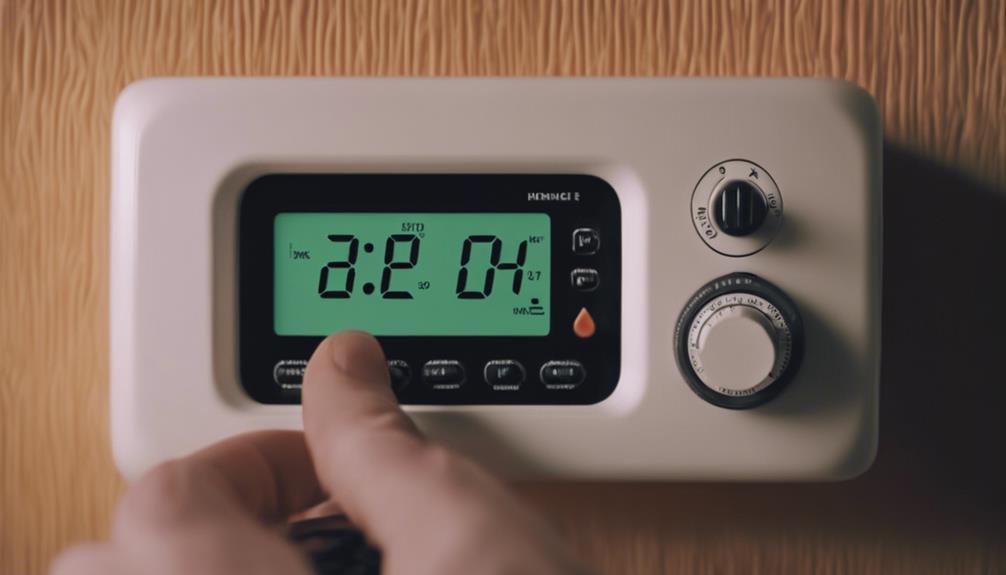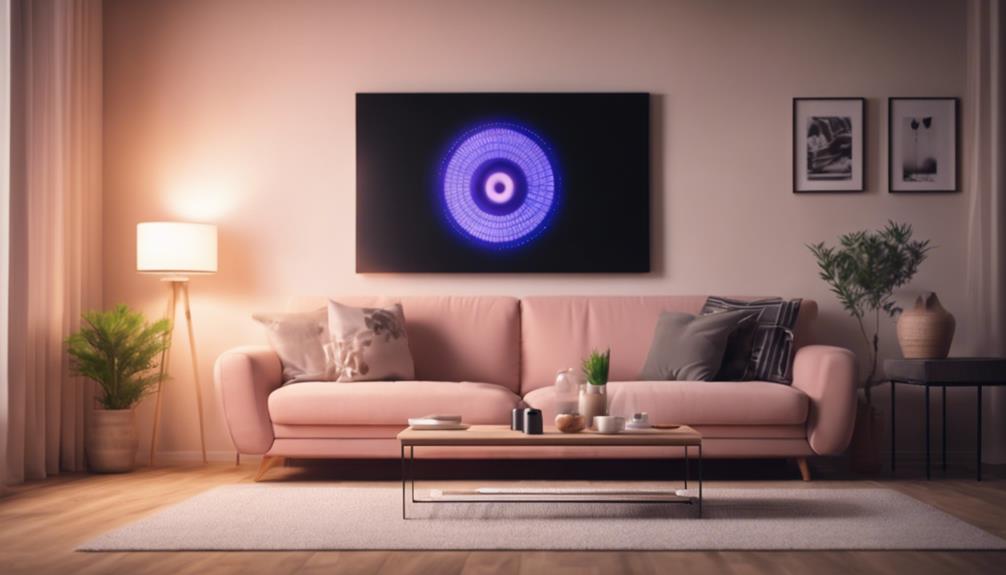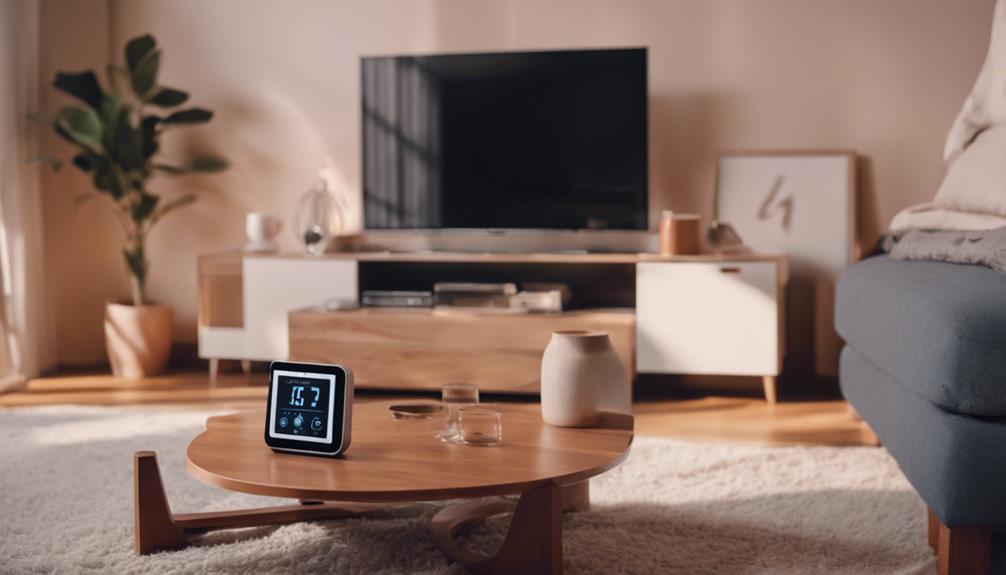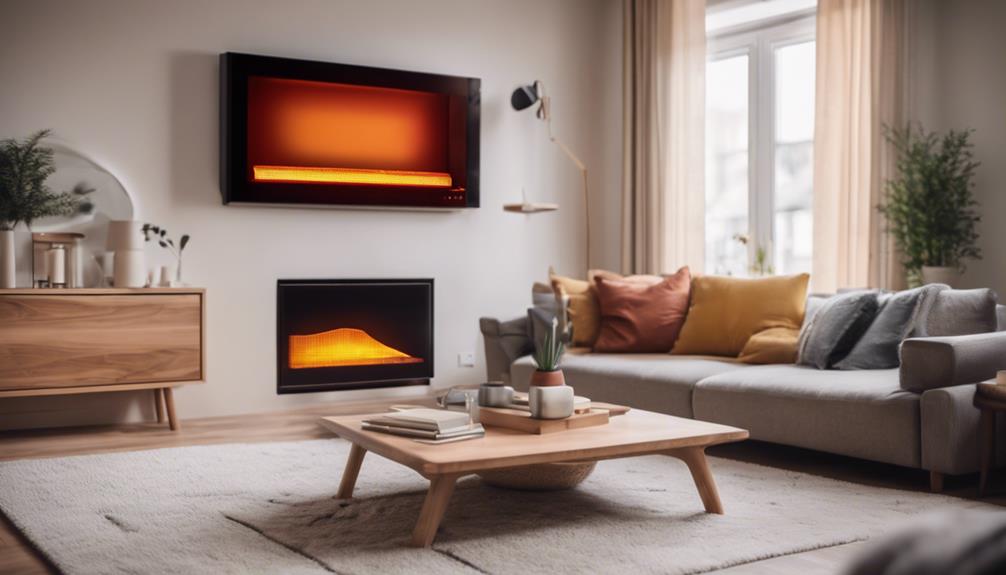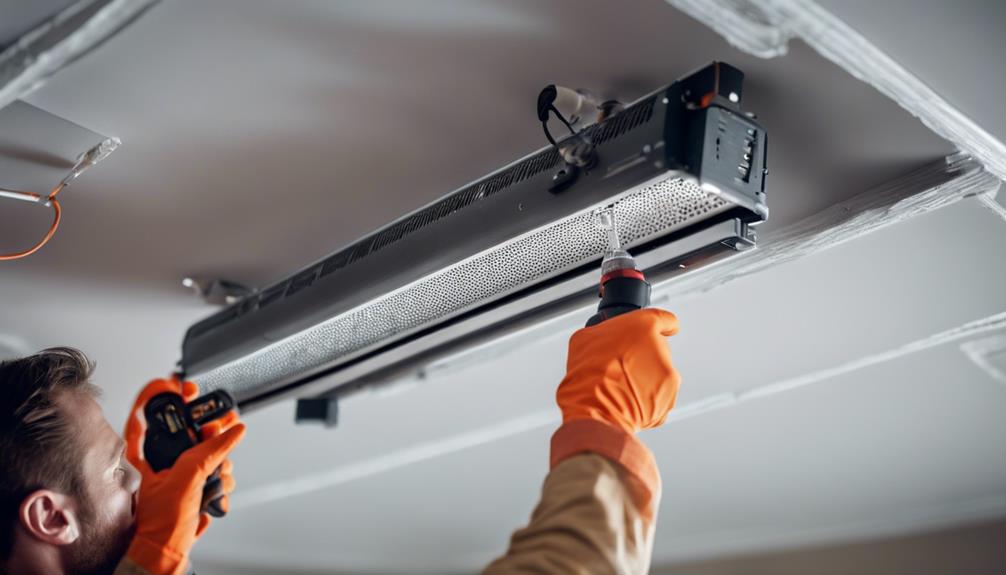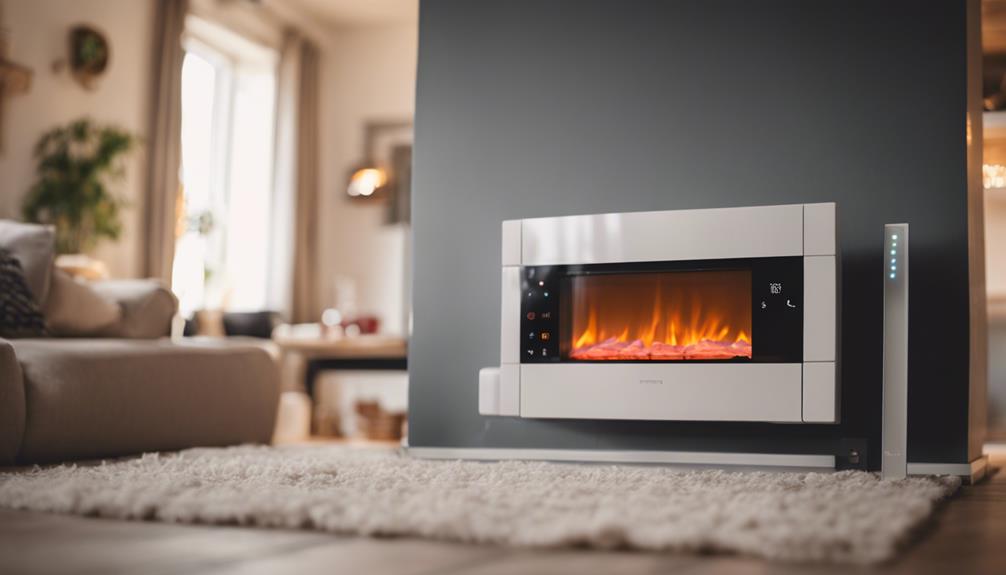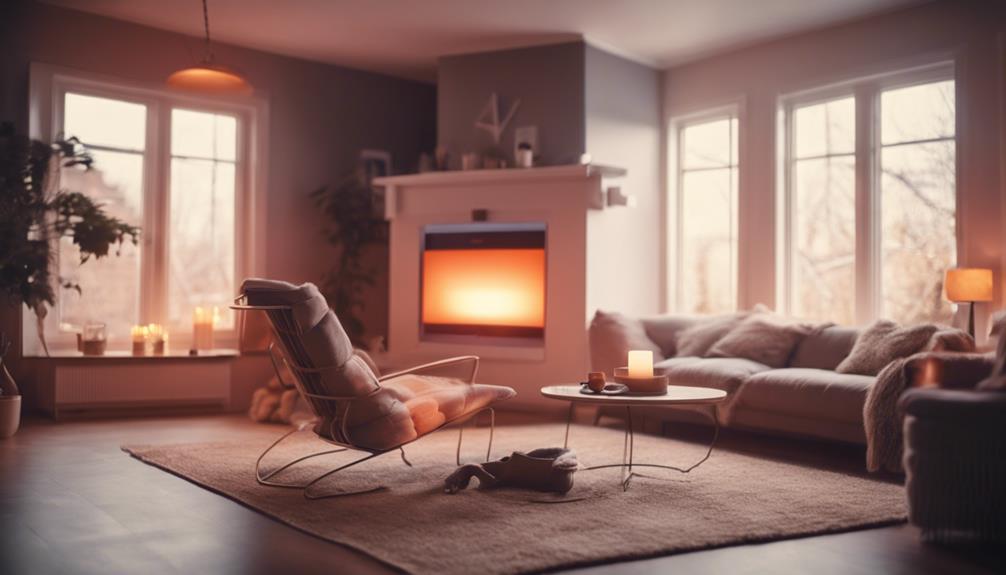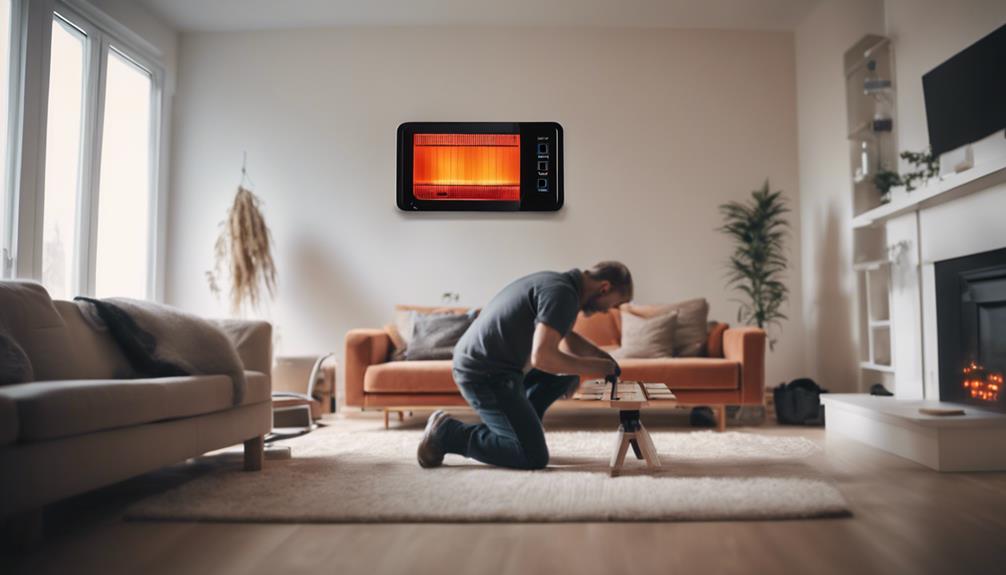
Combat allergies effectively with an infrared heater that not only warms your space but also enhances indoor air quality. Infrared heaters target airborne particles and pollutants, improving the air you breathe. By emitting heat that is absorbed by objects, they reduce the circulation of allergens, creating a healthier environment for allergy sufferers. Additionally, these heaters help in maintaining ideal humidity levels, preventing mold growth, and decreasing the presence of airborne allergens. Their gentle, steady heat prevents disruption of airborne particles, making them a valuable choice for those looking to combat allergies.
Health Benefits of Infrared Heaters

Improving circulation and promoting relaxation, using infrared heaters can provide a range of health benefits for individuals seeking relief from various conditions.
When it comes to skin health, infrared heaters can help stimulate collagen production, reduce acne, and improve overall skin tone. The deep penetration of infrared heat can enhance blood flow, leading to better oxygenation and nutrient delivery to the skin, resulting in a healthier complexion.
Moreover, infrared heaters are known for their energy efficiency. Unlike traditional heating methods, infrared heaters convert nearly all the energy they consume into heat, minimizing wasted energy and reducing overall electricity costs.
This energy efficiency not only benefits the environment but also saves you money on your utility bills in the long run.
How Infrared Heaters Help Allergies
Utilizing infrared heaters can greatly alleviate allergy symptoms by targeting airborne particles and pollutants in the air, helping to create a cleaner and healthier indoor environment for allergy sufferers.
Infrared technology works by emitting heat that's absorbed by objects and surfaces in the room, rather than heating the air directly. This process prevents the circulation of dust, pet dander, and other allergens that typically float in the air, reducing the triggers for allergies.
The infrared heat produced by these heaters also helps to maintain ideal humidity levels in the room, preventing the growth of mold and mildew, which are common allergens. By keeping the air dry and warm, infrared heaters create an environment less conducive to allergens and bacteria, ultimately providing relief to allergy sufferers.
Furthermore, infrared heaters don't rely on forced air systems that often spread allergens around the room. Instead, they emit gentle, consistent heat that doesn't disturb airborne particles, making them an excellent choice for those seeking allergy relief in their homes.
Improving Air Quality With Infrared Heat

Infrared heaters effectively target airborne particles and pollutants, contributing to the enhancement of indoor air quality. These heaters emit infrared radiation that heats objects directly, rather than warming the air. By doing so, they help reduce the circulation of dust, mold spores, and other allergens in the air.
In addition to heating, infrared heaters can play a significant role in air purification. The heat they produce can help eliminate bacteria, viruses, and volatile organic compounds present in the air, thereby improving overall air quality.
Moreover, infrared heaters can aid in humidity control within indoor spaces. Maintaining ideal humidity levels is essential for preventing mold growth and minimizing the spread of airborne allergens. By regulating humidity, infrared heaters create a more comfortable and healthier environment.
This dual functionality of air purification and humidity control makes infrared heaters a valuable addition to any indoor space, especially for individuals looking to combat allergies and improve their overall well-being.
Reducing Dust and Allergens
Reduce airborne dust and allergens effectively with the targeted action of infrared heaters. Infrared heaters work by emitting infrared radiation that directly heats objects and surfaces in a room, rather than heating the air. This focused heating mechanism helps to reduce the circulation of dust particles and allergens in the air, creating a cleaner indoor environment.
Through this process, infrared heaters can assist in allergen reduction by minimizing the presence of airborne particles that can trigger allergic reactions. By reducing the movement of dust in the air, infrared heaters contribute to dust control, making it easier to maintain a dust-free space.
In addition to targeting allergens and dust particles in the air, infrared heaters also help prevent the buildup of mold and mildew, further enhancing indoor air quality. The controlled heating provided by infrared heaters inhibits the growth of these allergen-producing substances, creating a healthier living environment for you and your family.
Safety Features of Infrared Heaters

To enhance the safety of your indoor environment, it's essential to be aware of the advanced safety features integrated into infrared heaters.
Infrared heaters utilize innovative infrared technology to produce heat efficiently and safely. One key safety feature of infrared heaters is their ability to operate without exposed heating elements, reducing the risk of burns or fires. This design also minimizes the chances of accidental fires caused by traditional heaters with hot surfaces.
Additionally, many infrared heaters come equipped with tip-over protection, automatically shutting off the unit if it's accidentally knocked over, preventing potential hazards.
Moreover, infrared heaters often have overheating protection, which guarantees that the unit doesn't reach excessive temperatures, reducing the risk of malfunctions or fires.
These safety features make infrared heaters a reliable and secure heating option for your home or office, providing warmth and comfort without compromising safety.
Choosing the Right Infrared Heater
When selecting an infrared heater for your space, take into account factors such as room size, heating capacity, and energy efficiency to guarantee peak performance.
Infrared heaters come in various types, including quartz, ceramic, and radiant tube heaters. Quartz heaters are known for their rapid heat production, making them suitable for quick warmth in smaller spaces. Ceramic heaters are energy efficient and provide a more consistent heat distribution, ideal for larger areas. Radiant tube heaters are excellent for spot heating specific zones efficiently.
Energy efficiency is an important aspect to evaluate when choosing an infrared heater. Look for heaters with adjustable thermostats and programmable timers to optimize energy consumption.
Additionally, selecting a heater with a high energy efficiency rating can help reduce electricity costs while maintaining a comfortable temperature in your space.
Tips for Using Infrared Heaters

To enhance the performance and guarantee efficient use of your infrared heater, follow these practical tips for its effective operation.
When it comes to infrared heater maintenance, make sure the unit is dust-free by wiping it down regularly with a soft, dry cloth. This helps maintain its effectiveness and prevents dust particles from burning when the heater is in use. Additionally, check the heater's cord and plug for any signs of wear or damage, as this could pose a safety hazard and affect the heater's energy efficiency.
For peak heater energy efficiency, place the infrared heater in a central location within the room you want to heat. This allows for even distribution of heat throughout the space, maximizing its effectiveness. Adjust the thermostat to a comfortable setting to avoid unnecessary energy consumption.
Remember to turn off the heater when not in use to save on energy costs and prolong the heater's lifespan. By following these tips, you can make sure your infrared heater operates efficiently and effectively.
Conclusion
To summarize, utilizing an infrared heater can be a beneficial tool in combatting allergies by improving air quality and reducing dust and allergens in your home.
With its safety features and energy efficiency, an infrared heater can provide a comfortable and healthier environment for those suffering from allergies.
Consider choosing the right infrared heater for your needs and follow the tips for best usage to maximize its benefits in fighting allergies.
